Zenon Palacz, Davydd Wanless, Ian Turner & Tony Jones. Isotopx Ltd. UK
Introduction
We have shown that very small ion beams of Nd+ (5 to 50mv) can be measured accurately and precisely using the Phoenix TIMS equipped with either 1e11 Ω or 1T Ω resistors1 . For small sample sizes measurement of Nd as Nd+ is not the best approach since the ionization efficiency is not sufficiently high.
On the Phoenix, ion/atom efficiency for Nd+ is typically 2% to 2.5% across all sample sizes. It has been shown that measuring Neodymium as an oxide species provides higher ionisation efficiency than the metal and allows the routine measurement of Nd at the sub 10ng level2 .
In this work we have analysed 2ng aliquots of Nd as NdO using both 1e11 Ω and 1T resistors to see if the lower noise characteristics of the 1T resistors provides an improvement in precision and accuracy. We have used the loading method of Harvey and Baxter2 (2009) where the source of oxygen is Ta2O5 loaded with the sample. Much of the sensitivity produced by this method can be attributed to the loading protocol. Note that we do not believe we have perfected this method but this work is intended to show a comparison in the performance of the two types of resistor for small ion beam measurements, rather than the ultimate sensitivity and detection limit.
Sample Preparation
2ng of Jnd-i Nd standard was loaded onto single degassed rhenium filaments together with a Ta2O5 solution. The solutions were dried down at 0.5A, then heated slowly to a dull red colour for 2 seconds. Essentially the samples were loaded in the same way as for Strontium isotope ratio analysis.
Mass Spectrometry.
Filaments were loaded into a Phoenix TIMS spectrometer. Following pump-down the source vacuum was
1e-8 mbar and the analyser vacuum was 1e-9mbar.
The filament was heated over a period of 40 minutes and an ion beam of 200 mv (2e-12 amps) was optimized. Isotope ratios were measured in the dynamic mode in blocks of 20 cycles. Each cycle comprised 3 mass positions of 10 second integration. A delay of 3 seconds was made between mass jumps to accommodate the 3 second time decay to reach baseline for the 1T resistors1 . Typically 10 blocks of data were taken. It was found that the ion beam could last for much longer, however, the mass fractionation became too large for adequate correction. Baselines and ion focussing occurred at the start of each block of data. Baselines were measured at +/-0.5 amu for 30 seconds either side of each of the 3 mass positions. The same method was used for both 1e11 Ω and 1T resistors.
Oxygen corrections were performed on-line using the oxygen isotope ratios of Nier 1950. It is known that this may not be totally accurate (Harvey and Baxter 20092 ).
Results
Sensitivity and Mass Fractionation Data for 1e11 Ω and 1T resistors are shown in Tables 1 and 2.
During analysis the ion signal remained fairly constant over the course of 3 to 3.5 hours, but towards the end of the measurement rapid increases and decreases in intensity occur (Figure 1).
The ion/atom efficiency obtained during analysis is typically 10%, though efficiencies of up to 17% are possible if the sample is taken to exhaustion.
The mass fractionation increases steadily over the course of a typical 3-4 hour analysis, but increases rapidly towards the end of the measurement (Figure 2). The exponential fractionation corrected ratio remains stable during the analysis (Figure 3). However more extreme mass fractionations are possible resulting in a non-exponential fractionation correction, typically when 146Nd/144Nd went above 0.7245. These data were not used in the compilation. Modifications in loading method may reduce the rate of mass fractionation.
Isotope ratios
Isotope ratio data for 1e11 Ω and 1T resistors on 2ng aliquots of Nd are shown in Table 1. Comparative data for 143Nd/144Nd and 145Nd/144Nd are shown in Figures 4 and 5 respectively. Taken as a whole, there is no significant difference between the two data sets. This supports previous work1 which showed no significant difference in the performance of 1T and 1e11 Ω resistors for ion signals >50mV.
For the 143Nd/144Nd, internal precision is typically 5-7ppm 1RSE, external precision is in the range 15 to 20ppm 1RSD.
The 1T data are closer to the expected ratio of 0.512104 which is obtained for large loads (>100ng) on triple filaments measured as Nd+ . This difference is likely to be related to the choice of oxygen isotope ratio.
The data are about two times less precise than NdO+ data reported by Harvey and Baxter 20092 , though they used 4ng of Nd in their standard data set.
Conclusions
- Analysis of Nd as NdO+ is at least 5 times more sensitive than analysing as Nd+.
- 2ng loads of Nd measured as NdO+ can be analysed to internal precision of 7ppm 1rse and external precision of about 15ppm 1RSD.
- There is no difference between the performance of 1T and 1e11 Ω resistors for Nd measured at these ion intensities.
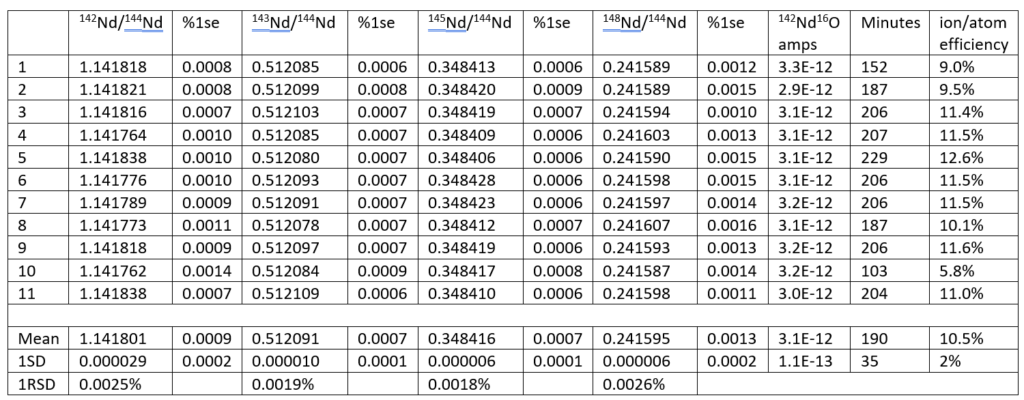
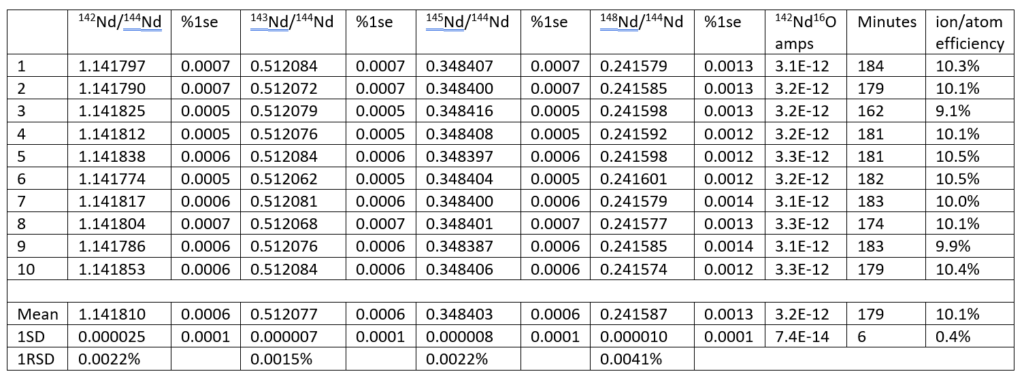
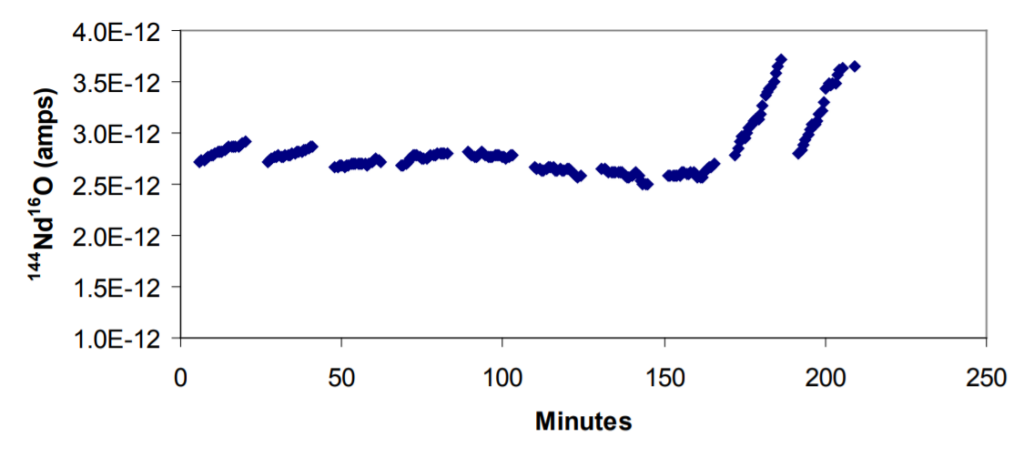
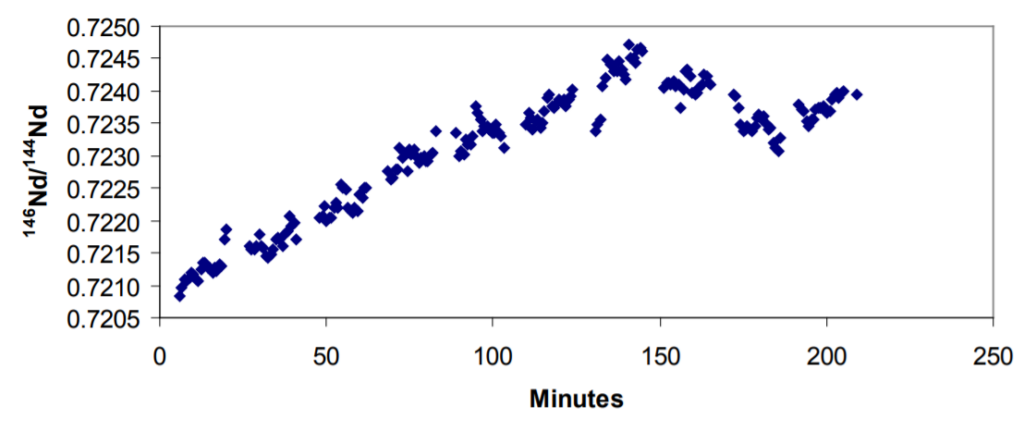
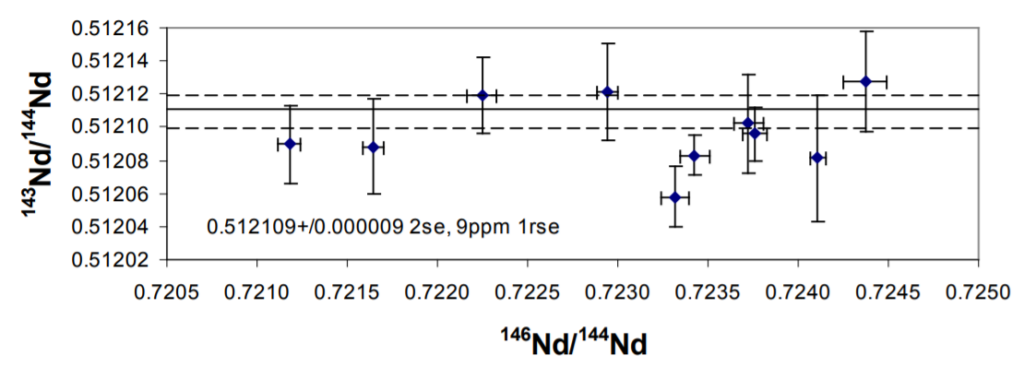
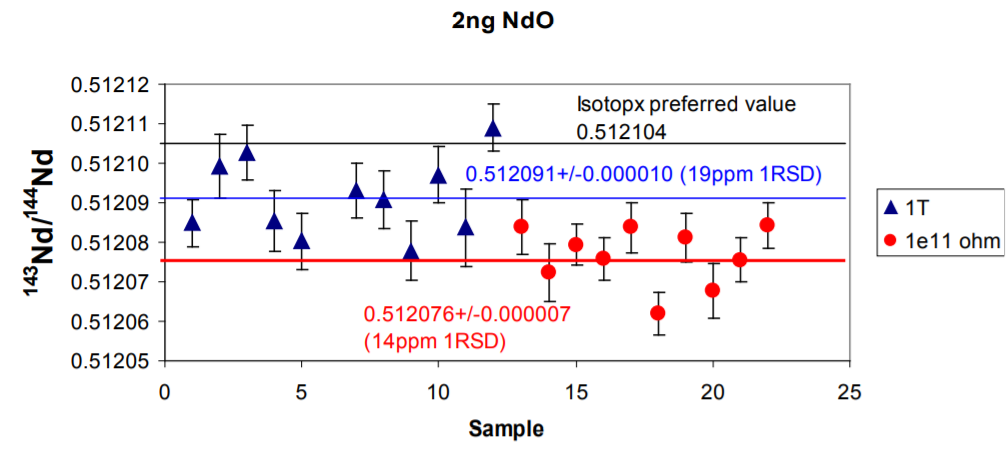
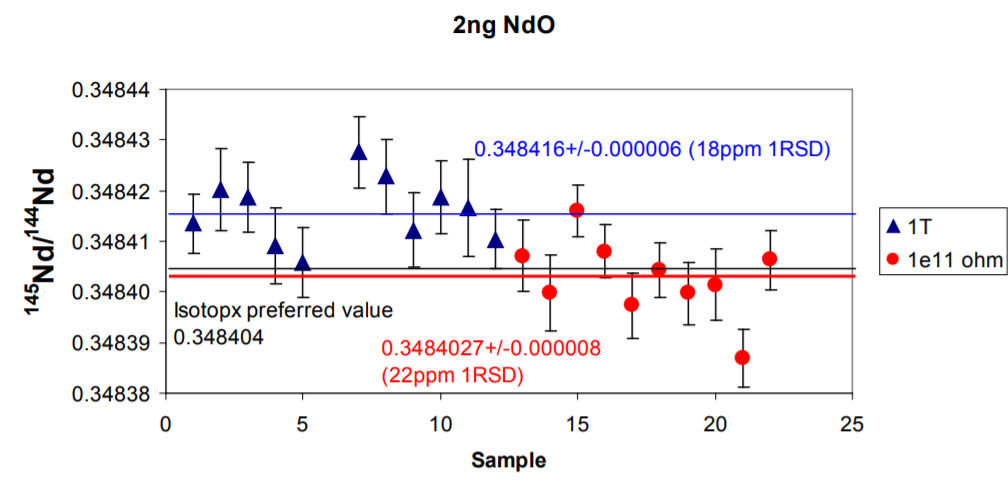
References
- Multidynamic measurement of small Neodymium (Nd+ ) ion signals on Faradays using Xact amplifiers with 1e11Ω and 1e12Ω (1T) resistors. Zenon Palacz, Davydd Wanless, Ian Turner & Tony Jones. Isotopx Technical Brief T10712, 2012. Click to download.
- An improved method for TIMS high precision neodymium isotope analysis of very small aliquots (1–10 ng). Harvey, J., Baxter, E.F. Chemical Geology Vol. 258 pp. 251–257, 2009.
- A re-determination of the relative abundances of the isotopes of carbon, nitrogen, oxygen, argon and potassium. Nier, A.O., Physical Review, Vol. 77, Issue 6, pp. 789-793, 1950. Link to pdf, purchase required.
Download Technical Note
Download the complete Technical Note: Measurement of 2ng Nd (NdO+) using Xact Faraday collectors